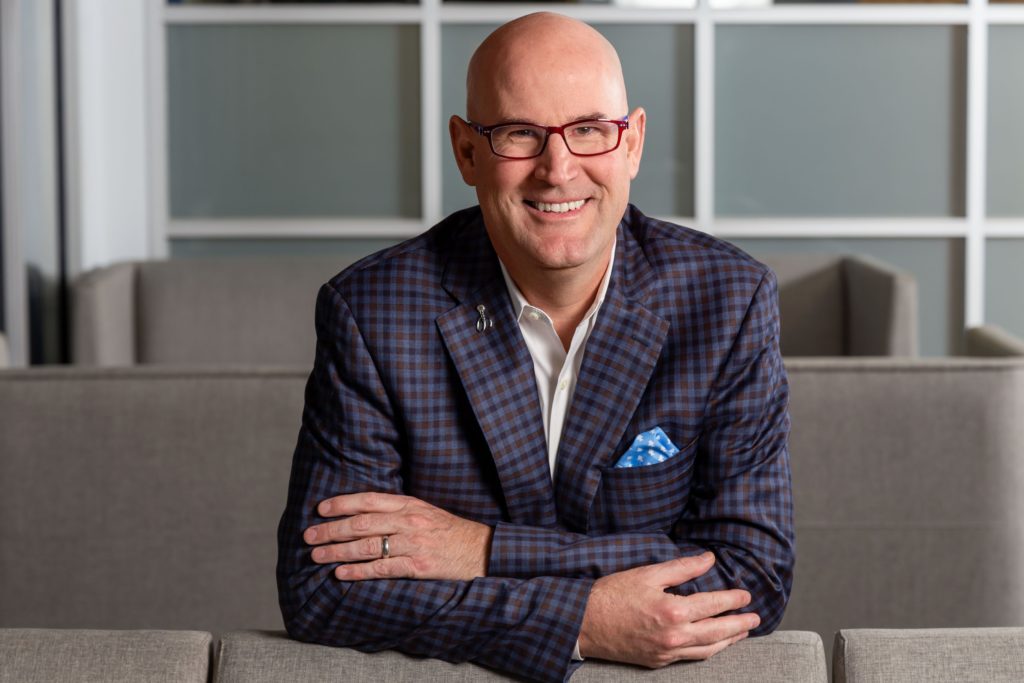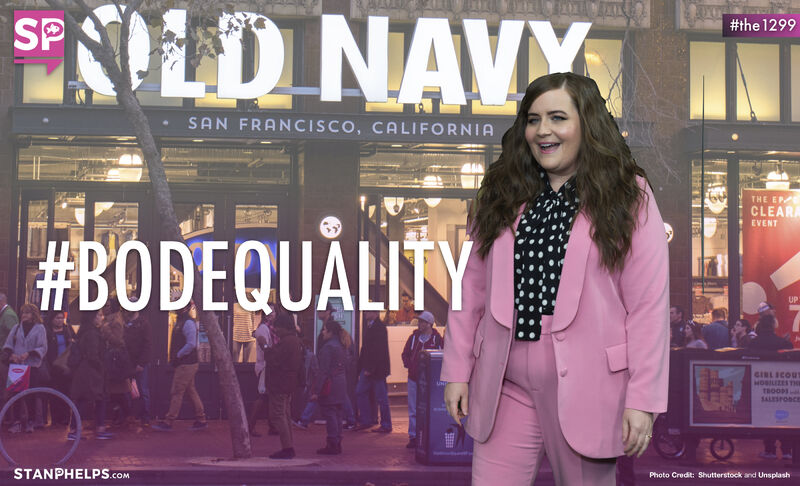Starting today, Old Navy will now be the first value retailer to offer sizes 0-30 and XS-4X for all women’s styles with no price difference. The BODEQUALITY campaign features SNL star Aidy Bryant.
BODEQUALITY is a portmanteau for body equality. Old Navy shares this is not just a campaign about inclusivity, it’s a brand commitment going forward both online and in its 1,200+ stores. Alison Partridge Stickney of Old Navy shared with Vogue, “It’s simple, right? If more than half of women in America are plus size, we now have clothes for all of them.”
For background, Old Navy was founded back in 1994 with the mantra “fabulous, affordable fashion for everyone.” This strategy certainly touches the “everyone” aspect, but can they do it in a way that’s both “fabulous” and “affordable?”
In “Pink Goldfish 2.0,” David Rendall and I explore this exact conundrum. We share how that there are external pressures to conform and to homogenize our organization’s offerings. Many companies try to find a way that pleases everyone or displeases no one.
We believe it isn’t possible to find an approach that makes all customers happy. That if a company tries to please everyone by becoming perfect, by fixing all of their weaknesses, they will fail.
Can’t companies be well-rounded and balanced and successful?
CASE IN POINT: Kmart.
They provide an illustration of what happens when a company tries to fix weaknesses, instead of focusing on strengths. Their historical leadership in discount retail was based on the blue-light special, a symbol of low prices. Kmart was “The Savings Place.” However, when faced with competition from Walmart, they did not focus exclusively on this price advantage and began to lose customers.
Kmart then began adding designer products from celebrities like Martha Stewart, but wasn’t quite ready to shed their low-price image. This allowed Target to capture higher-income customers who were design-conscious, while Walmart attracted lower-income customers who were cost-conscious.
Kmart’s efforts to fix their weaknesses ultimately led to bankruptcy. They became undifferentiated. They weren’t the best at anything, so customers had no reason to shop there. Their failure illustrates the dangers of trying to eliminate weaknesses and be more well-rounded.
There is a compelling reason to go to Walmart—low prices. There is a compelling reason to go to Target—better service and design. But there is no compelling reason to go to Kmart. Their prices aren’t the lowest and their service and design aren’t the best. In their effort to become well-balanced and well-rounded for everyone, they became average, mediocre, and invisible.
Question – Is this a smart brand strategy for Old Navy? Can you successfully be the “Everything for Everysize” store?
Follow me on Twitter or LinkedIn.

Stan Phelps walks the walk. He stands out in the sea of sameness by modeling his own Differentiated Experience (DX) message: Differentiation isn’t just about what you say, it’s about what you do and, more importantly, how and why you do it. Stan leverages his unique collection of 5,000+ case studies on customer, employee, and brand experience to engage audiences with informative learning-based experiences. He believes purposeful DX wins the hearts of employees and customers, and differentiation ultimately boosts loyalty, retention, referrals, and results.
Find Stan’s in-person and virtual keynotes, workshops, and Goldfish tank programs at StanPhelps.com.

